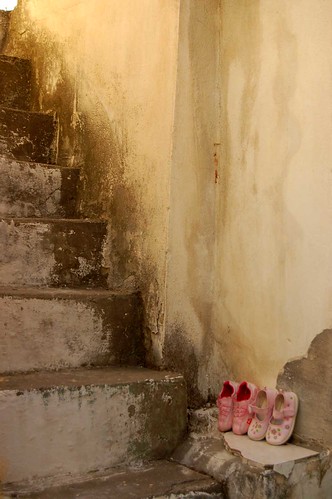Monday, November 3, 2008
http://en.wikipedia.org/wiki/Color_scheme#On_the_color_wheel
On the color wheel
Color schemes are often described in terms of logical combinations of colors on a color wheel. Different types of schemes are used.[2][3][4]
[edit]Monochromatic color scheme
A monochromatic scheme consists of different values (tints and shades) of one single color. These color schemes are easy to get right and can be very effective, soothing and authoritative[5]. They do, however, lack the diversity of hues found in other color schemes and are less vibrant. A special case is a two-color black-and-white scheme.
[edit]Analogous color scheme
Analogous color scheme
Also called harmonious colors, are colors that are adjacent to each other on the color wheel. Some examples are green, light green, and yellow or red, orange and yellow. Analogous color schemes are often found in nature and are pleasing to the eye.
When using the analogous color scheme, one should make sure there is enough contrast between the colors.
[edit]Complementary color scheme
Complementary colors are colors that are opposite each other on the color wheel, such as blue and orange, red and green, purple and yellow.
The high contrast between the colors creates a vibrant look, especially when used at full saturation. Complementary colors can be tricky to use in large doses.
[edit]Split-complementary color scheme
A color scheme that includes a main color and the two colors on each side of its complementary (opposite) color on the color wheel.
[edit]Tetradic color scheme
Tetrads (or quadrads[4]) are any four colors with a logical relationship on the color wheel, such as double complements.
On the color wheel
Color schemes are often described in terms of logical combinations of colors on a color wheel. Different types of schemes are used.[2][3][4]
[edit]Monochromatic color scheme
A monochromatic scheme consists of different values (tints and shades) of one single color. These color schemes are easy to get right and can be very effective, soothing and authoritative[5]. They do, however, lack the diversity of hues found in other color schemes and are less vibrant. A special case is a two-color black-and-white scheme.
[edit]Analogous color scheme
Analogous color scheme
Also called harmonious colors, are colors that are adjacent to each other on the color wheel. Some examples are green, light green, and yellow or red, orange and yellow. Analogous color schemes are often found in nature and are pleasing to the eye.
When using the analogous color scheme, one should make sure there is enough contrast between the colors.
[edit]Complementary color scheme
Complementary colors are colors that are opposite each other on the color wheel, such as blue and orange, red and green, purple and yellow.
The high contrast between the colors creates a vibrant look, especially when used at full saturation. Complementary colors can be tricky to use in large doses.
[edit]Split-complementary color scheme
A color scheme that includes a main color and the two colors on each side of its complementary (opposite) color on the color wheel.
[edit]Tetradic color scheme
Tetrads (or quadrads[4]) are any four colors with a logical relationship on the color wheel, such as double complements.
Subscribe to:
Post Comments (Atom)



No comments:
Post a Comment